Even though my 2020 in gaming was on the mediocre side, the same wasn’t true with manga. I read a lot of great stuff this past year, more than I can fit in this post. In addition to the ending of 2018‘s Manga of the Year, Silver Spoon, I wrapped up the comedic essay manga Skull-Face Bookseller Honda-san. There was also the first volume of Drawn & Quarterly’s long-awaited collection of Yoshiharu Tsuge works, The Swamp; What the Font?!, an informative introduction to typefaces; the cute BL story Our Dining Table; Sneeze, a solid short works collection by Naoki Urasawa; and the entertaining brain candy The Seven Princes of the Thousand-Year Labyrinth. Even a classic series I didn’t quite take to, Ai Yazawa’s Paradise Kiss, had a bit to recommend it. Note that not one of the manga I just named made it to the final list; that’s how good this past year was for me.
This ranking is done in much the same way as with my Gaming Selections, with honorable mentions and a top three. After each manga’s title is the author(s), the North American publisher, the first year of Japanese serialization, and the number of volumes I’d read roughly up until the end of 2020 (followed, in parentheses, by the total number of Japanese volumes). Series printed in omnibus, kanzenban, or similar editions are denoted with an asterisk (*), but the numbers reflect the original volumes as they were first printed in Japan. All of the cover images used here came from Right Stuf or the publisher’s website. Finally, there are no repeats from previous years’ lists in either the honorable mentions or the top ten, even if I was still reading (and loving) a particular series.
Honorable Mentions:
• The Drifting Classroom* – For being a horrific and gripping isekai series.
• Otherworldly Izakaya “Nobu” – For being a pleasant and mouthwatering isekai series.
• Wish* – For holding up since my previous read many years ago, and for being just a flat-out great CLAMP story.
• World Trigger – For its thoughtful, strategy-focused take on the shounen battle formula.
• Wotakoi: Love is Hard for Otaku* – For its highly-relatable everyday stories about friendship and love between geeks.
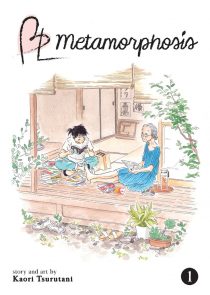 BL Metamorphosis
BL Metamorphosis
Kaori Tsurutani | Seven Seas | 2017 | 2 (of 5)
On a whim, an old widow picks up a boys’ love manga at a bookstore. She becomes so fascinated by this book that she befriends the girl at the bookstore who rang her up, an ordinary high schooler who happens to be a fan of manga, and BL in particular. Thus begins the tale of an odd yet endearing friendship, told with a delicate touch. Along the way, we get to know friends, family members, and the main pair’s concerns outside of the fandom which brought them together. We also see the two of them change in subtle ways, particularly the girl Urara; it will be interesting to see where her new friendship leads her. BL Metamorphosis is a slice-of-life drama which easily ranks among the best new series to debut in English in 2020.
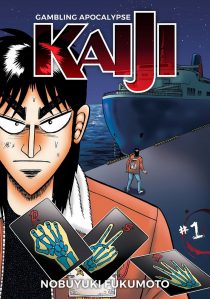 Gambling Apocalyse Kaiji
Gambling Apocalyse Kaiji
Nobuyuki Fukumoto | Denpa | 1996 | approx. 4 (of 13)*
Fukumoto-sensei is famous in Japan for his seinen thrillers, often centered around gambling or business, but this is the first of his works to be officially translated into English. I hope it’s not the last. In this manga’s first arc, down-on-his-luck protagonist Kaiji finds himself on a shady cruise ship, playing the world’s most dangerous game of Rock Paper Scissors in the hopes of erasing his debts. The matches that happen on this cruise are tense affairs, rife with staredowns, sweating, and “zawa zawa” murmuring sound effects. Kaiji and the others trapped in this game form alliances and dissolve them, help and hurt each other, and alternately break down in tears or grit their teeth in determination. It’s a real page-turner, and after the second omnibus volume’s lengthy delays, I hope the wait is not as long for the third.
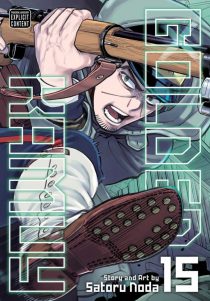 Golden Kamuy
Golden Kamuy
Satoru Noda | Viz Media | 2014 | 18 (of 24+)
This series, set in early 20th century Hokkaido, has all the hallmarks of a great seinen manga: intense action, dynamic artwork, a sense of humor, and a sprawling plot carried along by a fascinating cast of characters. Throw in some heavily researched passages about the cultures of the Ainu and other indigenous people in the area, plus food porn and a dash of cheeky homoeroticism, and it becomes something truly special. Golden Kamuy stars “Immortal” Sugimoto, a soldier who, after the Russo-Japanese War, sets out on a quest to find a hidden cache of Ainu gold. He soon partners up with Asirpa, an Ainu girl skilled in both hunting and wilderness survival. The cast slowly builds from there as the two encounter new allies as well as rivals. I don’t want to say much more, as that would get into spoiler territory. Highly recommended if you like historical action, or just action in general.
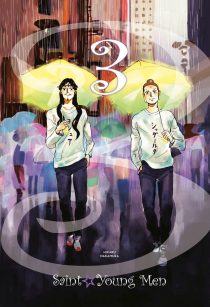 Saint Young Men
Saint Young Men
Hikaru Nakamura | Kodansha Comics | 2006 | 6 (of 18+)*
Once considered unlicensable—several years ago, Nakamura-sensei was reluctant to approve this for an English-language release out of fear of offending overly sensitive Christians—the everyday adventures of Buddha and Jesus are miraculously now available in North America. These two holy figures have come to modern-day Japan on a long vacation, and find themselves intrigued and entertained by their experiences there. Gags involve a wide range of subjects, from Tezuka manga to Johnny Depp, plus there are so many references to Buddhism, Christianity, and Japanese culture that there’s a set of translation notes for each individual chapter. Nakamura-sensei handles these two prophets respectfully, keeping them in character while also putting them, along with their disciples and various other holy figures, in very funny situations. Saint Young Men has definitely been worth the wait.
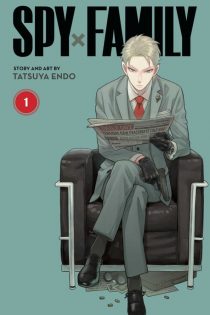 SPY x FAMILY
SPY x FAMILY
Tatsuya Endo | Viz Media | 2019 | 2 (of 5+)
This is the strongest shounen comedy debut I’ve read since Assassination Classroom, and it’s a series you won’t want to miss out on. The main characters are Loid, a professional spy for a neighboring country; Yor, who moonlights as an assassin; and Anya, a telepathic young girl. All three have agreed to become a family unit, each for their own reasons, and they all keep their true selves hidden from each other. Well, actually, Anya knows who Loid and Yor really are thanks to her mind-reading ability, and is thus a reliable source of a lot of the series’ comedy—not to mention some truly hilarious facial expressions. The art is crisp, as is the pacing, and as Loid’s mission continues, I can’t wait to see where it goes. I’ve already said this elsewhere, but SPY x FAMILY is going to blow up in popularity once it inevitably gets an anime. The hype around this series is the real deal.
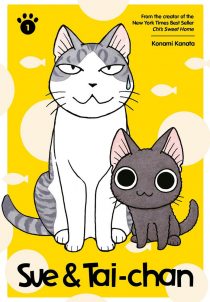 Sue & Tai-chan
Sue & Tai-chan
Konami Kanata | Kodansha Comics | 2017 | 2 (of 3+)
There was quite a bit of good slice-of-life cat manga released this past year, including A Man & His Cat and With a Dog AND a Cat, Every Day is Fun, but Chi’s Sweet Home mangaka Konami Kanata’s newest series is my favorite of the bunch. Sue is an elderly grey and white tabby who leads a quiet life with her single male owner, until a fuzzy black kitten called Tai-chan arrives and disrupts her peace. The two cats couldn’t be more different in temperament and energy levels, and it’s been fun seeing how they slowly get acclimated to each other chapter by chapter. Tai-chan’s wide eyes and cheerful smile whenever he spies something new and exciting is as cute as anything in Chi’s Sweet Home, and Sue is quite relatable, for being a cat. A funny, heartwarming manga.
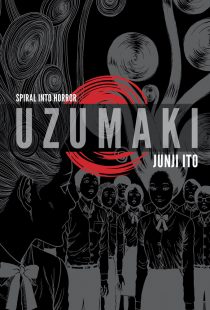 Uzumaki
Uzumaki
Junji Ito | Viz Media | 1998 | 3 (of 3)*
This year, I dipped into the world of grotesque, Japanese-style horror with Kazuo Umezz’s The Drifting Classroom, and later, wanting to read more, decided to finally check out Junji Ito’s works in the genre, starting with Uzumaki. Ito-sensei counts Umezz-sensei as a major influence, but of these two works, I found Uzumaki to be the stronger one. This story is set in a small seaside town, which is, according to a high school-aged boy Shuichi, “cursed by the spiral”. Shuichi’s father becomes obsessed with spirals; later, his mother does too, in a different way. Spirals appear in story after story—which are typically told from the point of view of Shuichi’s girlfriend Kirie—and these spirals lead their victims to imaginative, and grotesque, ends. Some of the stories technically involve coils rather than spirals, which weakens the overall narrative a bit, but other than that, it’s a solid series, especially as several loose threads all come together in the last third. If you might be wondering how spirals of all things might be horrific, give Uzumaki a chance.
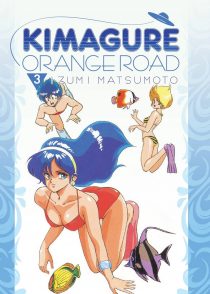 Third Place
Third Place
Kimagure Orange Road
Izumi Matsumoto | Digital Manga Publishing | 1984 | 12 (of 18)*
Teenager Kyosuke moves to a new town, and almost immediately meets the girl of his dreams while out and about. However, he’s not yet aware that this seemingly mature girl, Madoka, is a well-known delinquent. Oh, and did I mention that Kyosuke comes from a family of psychics, and that they hide their abilities from everyone? Soon the third corner of the love triangle, Madoka’s perky friend Hikaru, is introduced, and the stage is set for one of the most beloved manga of the 80s, which would be Shonen Jump‘s longest-running rom-com until Nisekoi took its crown a couple of decades later. Despite KOR being so highly revered, it was never licensed in the US until recently (and the circumstances around that are… complicated), most likely because of several scenes of underage smoking and drinking. The art style and fashion are fabulously 80s; around the halfway point, the art even starts to sport a heavy Katsuhiro Otomo influence, like so much other manga did back then. Despite my distaste for DMP these days, I’m grateful to them for translating this gem of a series. Sadly, Matsumoto-sensei passed away in October; honor his memory by picking up this sweet and lovely comedy.
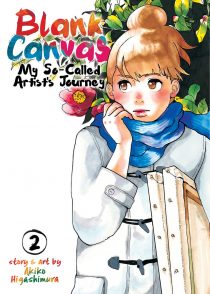 Second Place
Second Place
Blank Canvas: My So-Called Artist’s Journey
Akiko Higashimura | Seven Seas | 2011 | 5 (of 5)
Blank Canvas is one of a small number of manga memoirs that have come out in English, and what a moving work it is. Nowadays, Higashimura-sensei is a renowned workaholic of a mangaka, whose Princess Jellyfish and Tokyo Tarareba Girls have been covered in previous installments of this feature. However, all artists have to start somewhere, and Blank Canvas is about her own beginnings as a manga-loving teenager in sunny Miyazaki prefecture, where she meets the art teacher who will change her life. This teacher, Hidaka-sensei, is a traditional artist who runs an independent art school for kids like Akiko, though this “school” is more like a “boot camp”. Despite being such a hardass, Sensei sees a lot of potential in Akiko, even though she doesn’t want to become either a painter or an art teacher, which leads to the guilt which pervades this work. This is a heavy manga, sure, but it’s also quite funny at times, and has a lot to say about the creative process and the special people in one’s life. Deeply personal, Blank Canvas might be the best of Higashimura-sensei’s manga in English to date, which is saying something.
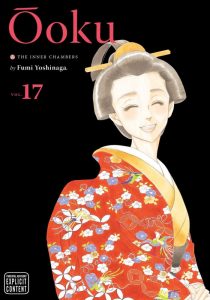 First Place: Manga of the Year
First Place: Manga of the Year
Ooku: The Inner Chambers
Fumi Yoshinaga | Viz Media | 2005 | 17 (of 19)
Yoshinaga-sensei is my favorite mangaka, and out of all of her works, Ooku is the best. It’s a reimagining of Japan’s Edo period, when governance was handled by the Tokugawa Shogunate, except this time, a devastating disease called the Redface Pox has killed off most of the country’s male population. Because of this, the women of Japan gradually take on new roles: as merchants, professionals, bureaucrats, and even as the shogun. Naturally, since the shogun is now a woman, that means that her personal harem, the ooku, is stocked full of men.
Ooku follows the lives of these shoguns and their families, rivals, advisors, servants, consorts, and concubines. It is an epic covering hundreds of years, over the lives of more than a dozen rulers, and at the same time is entrenched in interpersonal drama, complete with the walls of snappy, energetic dialogue that Yoshinaga-sensei is famous for. A key part of all of this is the story of how the Redface Pox is dealt with by the shogunate, and how the ooku plays a crucial role. The cast is absolutely massive, but since nearly the entire story is told in chronological order, there are only a handful of names one needs to remember at a time. Each one of these characters is made memorable in their own way, with distinct, carefully crafted storylines which often impact the overall narrative.
Collected volumes of Ooku come out infrequently, which is why it hasn’t appeared in my Manga Selections posts until now. It ended in Japan this past month, after fifteen years of serialization, with the nineteenth and final volume due out in February. We have a bit longer to wait for the ending here in North America, of course, but I hope that the English-language edition will wrap up before the end of 2021. I’m not anticipating a happy end to this story—the real-life conclusion of the shogunate was a messy one—but I’m curious to see how the legacy of both the Redface Pox and the Tokugawas will play out in the end.